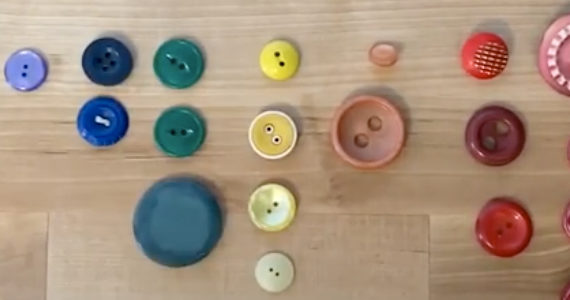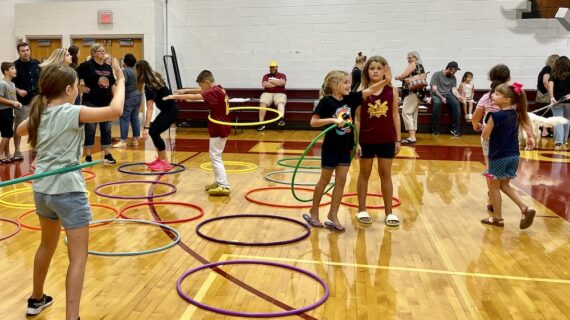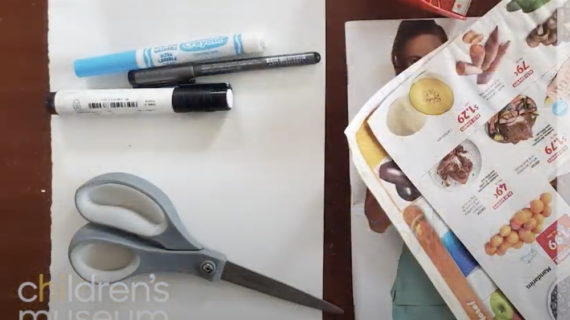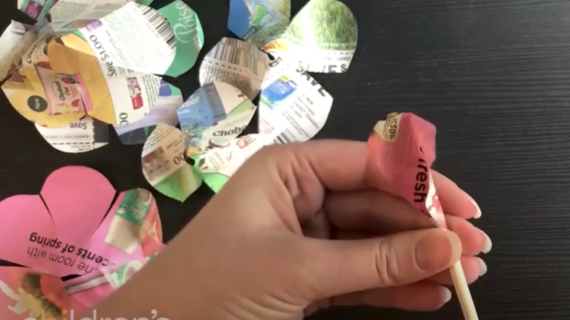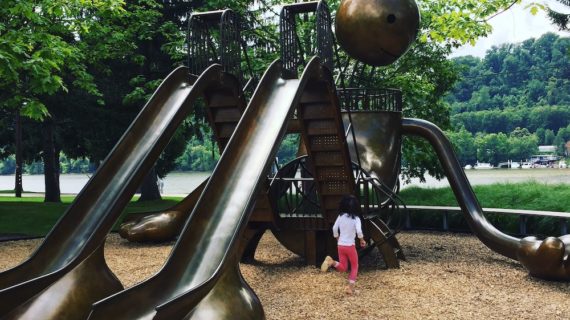
Your ultimate guide to a stress-free back-to-school transition
Photos courtesy of Discover Organizing.
As summer days wane and the back-to-school buzz fills the air, families everywhere face the annual challenge of transitioning from vacation mode to the structured routine of the academic year. For many, it’s a time of mixed emotions — excitement for new beginnings and some nerves about the changes.
But don’t worry — there are smart, fun ways to turn this whirlwind into a smooth sail. With expert advice from Jill Yesko Diana of Bridgeville’s Discover Organizing and Dana Davin, center director at McMurray KinderCare Learning Center, here’s a guide to make this transition smooth and stress-free for everyone involved:
Start back-to-school conversations at home.
Children sometimes experience big feelings, and they may not know how to explain what they’re experiencing. “Whether it’s excitement, jitters, or anxiety around the unknown, having open conversations at home about school can give children a comfortable space to share what they feel and help quell their nerves,” Dana says. “This is also a good time to gently remind your children about kindness and acceptance of others. During the school year, monitor your children’s behavior to better understand their feelings.”Embrace the power of routine.
Jill emphasizes the importance of establishing a routine, especially for kids with ADHD or other learning differences. “If your child is experiencing brain-based challenges such as ADHD, their executive functioning might pose difficulty when navigating their daily schedule,” she explains. “Finding ways through good routine establishment will increase your child’s investment in building their successful strategies.” By creating a predictable daily pattern, you can significantly reduce the stress associated with study time, homework, and daily bell schedules.Routine definitely helps create a successful transition to the school year. So make a plan: Before school starts, begin adjusting your family’s daily schedule. Gradually shift bedtimes and wake-up times to align with the school routine. This gentle adjustment helps everyone acclimate without the shock of a sudden change.
Go for old-school tools.
While digital tools are often touted as productivity saviors, Jill’s top recommendation is delightfully screen-free. “While there are multiple productivity apps for devices, my favorite tool is analog-based,” she reveals. “It’s called the Time Timer, and it shows—in a very visual and interactive way—how much time remains on an often undesirable task such as homework.” The Time Timer helps kids visually grasp how much time they have left, reducing the risk of digital distractions that come with apps on phones and tablets.
Involve kids in the organizing process.
Turning organizing into a collaborative process can make it more engaging for kids. “When working with children and teenagers,” Jill says, “we always ask them how they like to spend their free time and what they enjoy doing when they are not studying or in class. We create a reward system with their full participation as to what ‘carrots’ truly mean for them.” For example, if your child loves skateboarding or painting, set up a dedicated space where they can enjoy these activities once they finish their chores or school assignments. This approach not only makes organizing fun but also helps them see the value of completing tasks.Making organization fun can be as simple as creating inviting spaces. “The best tools are the ones we see in classrooms every day, especially those designed for young children. Think about it: There is a reading corner, desks for learning, and a hands-on interactive zone to learn kinesthetically,” Jill says. “Having similar zones in the home or child’s bedroom that create that sense of purpose for each space will give them a place to land (and learn) in their environment.” Think cozy reading corners with bean bags or small play tents, and well-lit desks with cubbies for supplies.
Adapt strategies to your child(ren).
Organizational needs evolve as kids grow, and Jill offers some practical advice. “Parents might not be experts in child development, but they are the experts of their children,” she notes. “Each year of a child’s life adds new opportunities to take on more responsibilities.”For younger children, a simple basket near the door for school papers can work wonders. “However, for teenagers, a portable file labeled with ‘sports,’ ‘school,’ etc., would be more age-appropriate,” Jill adds. It’s all about adapting strategies to fit their developmental stage, ensuring that they remain organized and empowered.
Jill advises personalizing the experience. “When a family thinks about checking the back-to-school list that the school sends home, it’s easy to not ‘personalize’ the experience for their child,” she explains. “It’s important to be as involved with the child as preparations are taking place so they stay engaged in the process throughout the year. Yes, this might mean that they have to go to Target with you. But it also means they are connected to the “why” of the school supply list.”
Get ahead of morning mayhem.
Mornings can be chaotic, especially when unexpected issues arise. Jill’s solution? “My best strategy is to set the alarm back 15 minutes for everyone, including the child,” she suggests. “Adding a time buffer to review paperwork, stopping for the homeroom snack they forgot to tell you about on the way to school, or dealing with a fashion emergency will help relieve stress and frustration.”
Do a trial run.
Davin advises doing a trial run and adjusting as needed. If your child is attending a new school, ask for permission to take an after-hours tour to increase familiarity and practice your routine. Also, according to KinderCare’s Parent Confidence Index, 71% of parents believe being a parent means constantly thinking about childcare gaps.So now is the time to make before- and after-school care arrangements and discuss them with your children, running through what the pickup/dropoff process will be like. Help ease their nerves by ensuring young kids practice simple tasks like opening and closing lunchboxes, water bottles and backpacks. Make sure they feel confident in these tasks.
Set school-year goals.
These don’t have to be formal; they can be impactful and fun. “Help your child determine what they want to achieve this year,” Dana says. “Maybe they want to try a new sport, learn a musical instrument, increase their math competencies by a letter grade, or demonstrate more patience while learning new things.”Make a mental note to continuously revisit these goals throughout the year to celebrate progress and growth. Watch for ways you can help them accomplish these objectives with support from counselors, coaches, and instructors, as well as at home.
Also, here are some practical and fun strategies to have an even better back-to-school transition this year:
Bedtime “Adventure” Kit: Don’t worry, it’s easy: The ‘kit’ is just items from around the house. Include a soft, cozy blanket, a favorite stuffed animal, and a few bedtime books. You might also add a small flashlight for a “reading under the stars” effect or a few glow-in-the-dark stars for a calming effect.
Dance Party: Start the school year with a bang! Create a playlist of upbeat family favorites and host a dance party in the living room.
Lunchbox Bento Fun: Let your kids arrange their favorite foods into colorful compartments and call it a win-win for everyone!
Homework Reward Chart: Create a colorful chart to track homework and study milestones. Every time your child completes a task, they add a sticker to the chart. After reaching a certain number of stickers, reward them with a special treat or activity, like a movie night or a trip to their favorite park.
Morning Routine Race: Turn morning routines into a fun competition. Set a timer and challenge your kids to complete their morning tasks before the timer runs out. Offer a small prize or a “Breakfast Champion” badge for the fastest or most efficient routine.
After-School Adventure Jar: Fill a jar with ideas for fun, low-cost activities to do after school. Each day, let your child pick an activity from the jar—like a nature walk, a craft project, or baking cookies.



